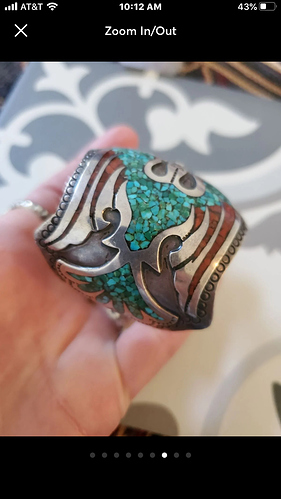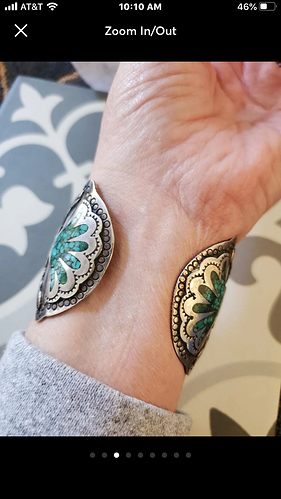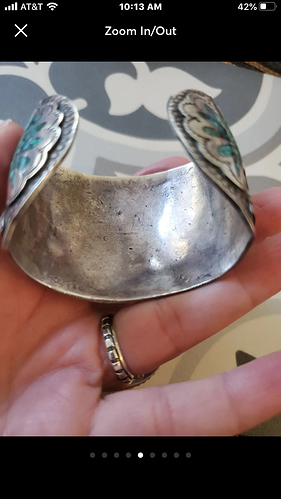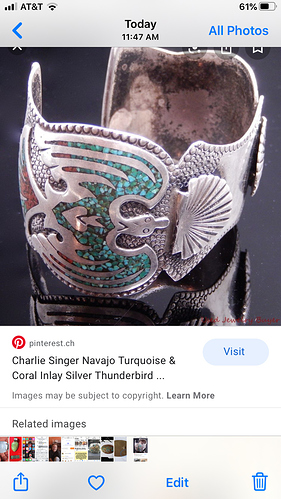Here’s a thread specifically about chip inlay.
I’m not an expert, but I am a collector who has focused on a particular artist and on a particular object, the cuff bracelet. I own 67 cuffs in the chip inlay style made by Delvin J. Nelson, a Navajo artist. While amassing this collection, I’ve looked at a lot of chip inlay. I’m passing along some notes about chip inlay, based on my experience.
[url=https://imgur.com/IaO1tjA]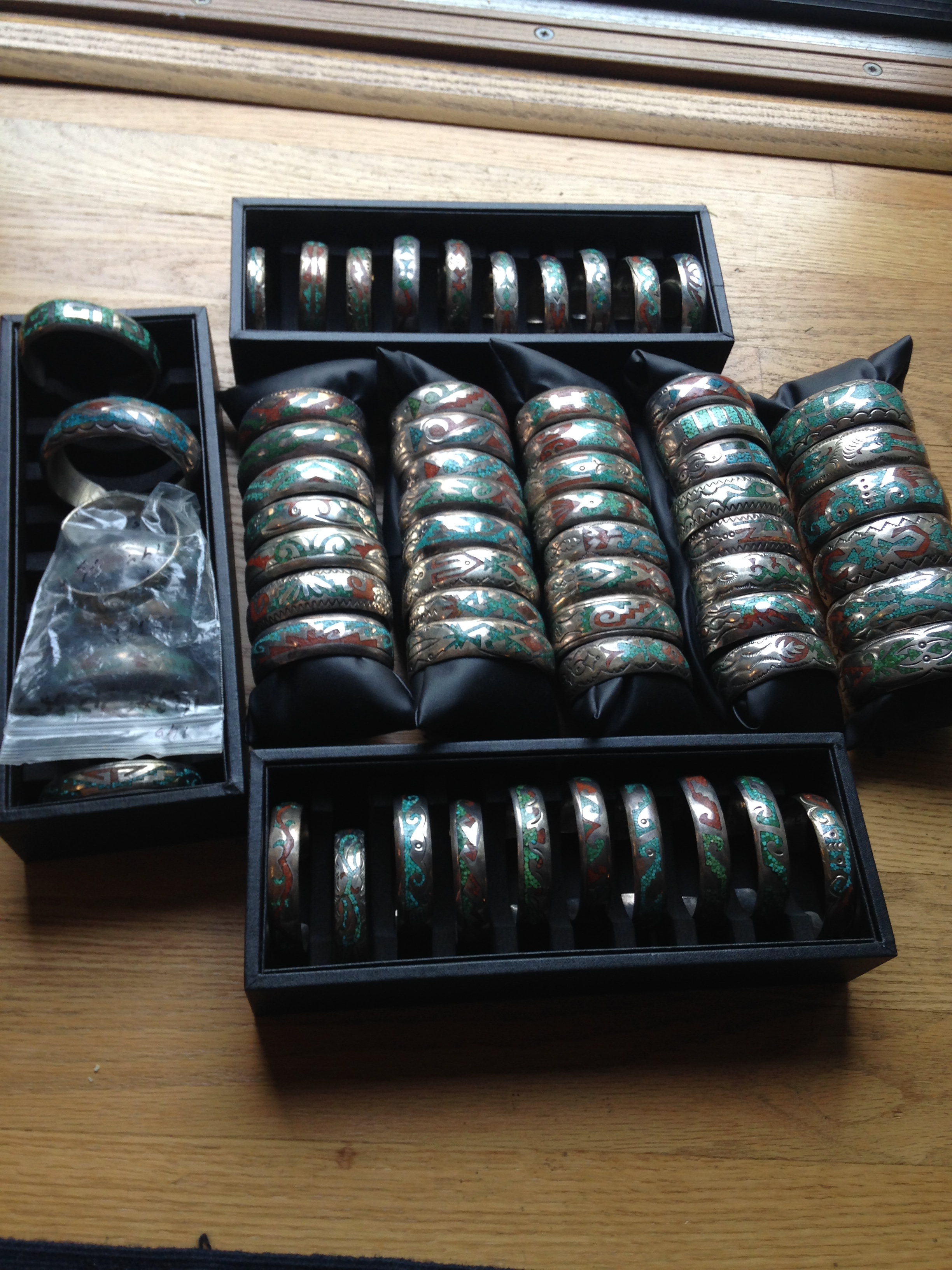 [/url]
[/url]
Personally, I love the chip inlay designs that make me think of pottery or textiles, and that also incorporate stampwork. But I have seen beautiful work by artists who create pen sketches in scored silver, and juxtapose them with filled-in patches of inlay. One motif you see often in chip inlay is the peyote bird. The great spread-winged renderings of peyote birds or thunderbirds are one of the glories of chip inlay.
If you’re thinking of buying a chip inlay piece.
-
Don’t listen to dealers who tell you that a chip inlay piece is really, really old, and that therefore, its antiquity means you have to compromise on condition. Chip inlay is only as old as epoxy resin. The Navajo artist Tommy Singer invented it during the 1960s. This could also mean your seller may not be very knowledgeable about chip inlay. They are also probably wrong if they call these pieces Zuni, perhaps because they are equating all inlay with Zuni artists. Most I’ve run across seem to be Navajo-made, though I think some Hopi artists may have worked in chip inlay.
-
Unlike many other silver bracelets, chip inlay bracelets must fit you right without adjustment. You must measure your wrist and check the measurements on the cuff if you can’t try it on in person. If the seller doesn’t list the dimensions, Ask the Seller a question & ask them to measure for you. Chip inlay cuffs can’t be bent. If you bend them, you will loosen and crack or pop out the inlay. I recommend buying the heaviest, thickest chip inlay bracelet you can, not just to invest in silver, but to get something you can avoid accidentally flexing. Also, know how to put on a cuff bracelet correctly.
[url=https://imgur.com/zc1aDFb]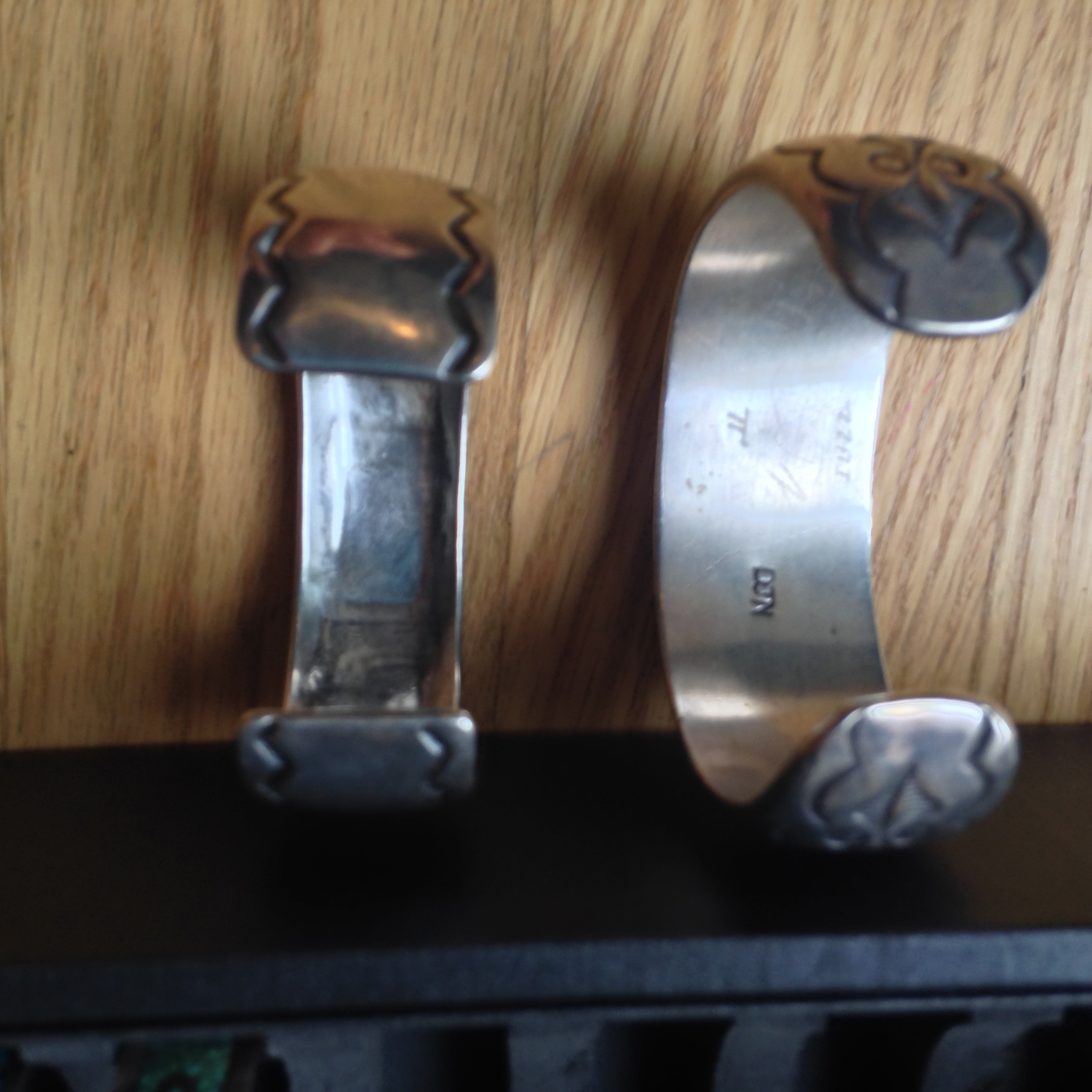 [/url]
[/url]
Two thicknesses of bracelet. Both are safe but the piece on the right is the safest.
- Check every tiny inch of your chip inlay bracelet before buying it. Ask for more photographs if the seller doesn’t supply enough. If you’re buying in person, hold the bracelet at an angle away from you, run your finger over it. The inlay ought to be perfectly flush with the silver or even a little lower. If it’s starting to lift upward in the channels that hold it, it may have been compromised. I bought a bracelet like this once by accident, and as soon as I began rubbing it with a polishing cloth, I lost part of a section of inlay!
[url=https://imgur.com/3tIVO43]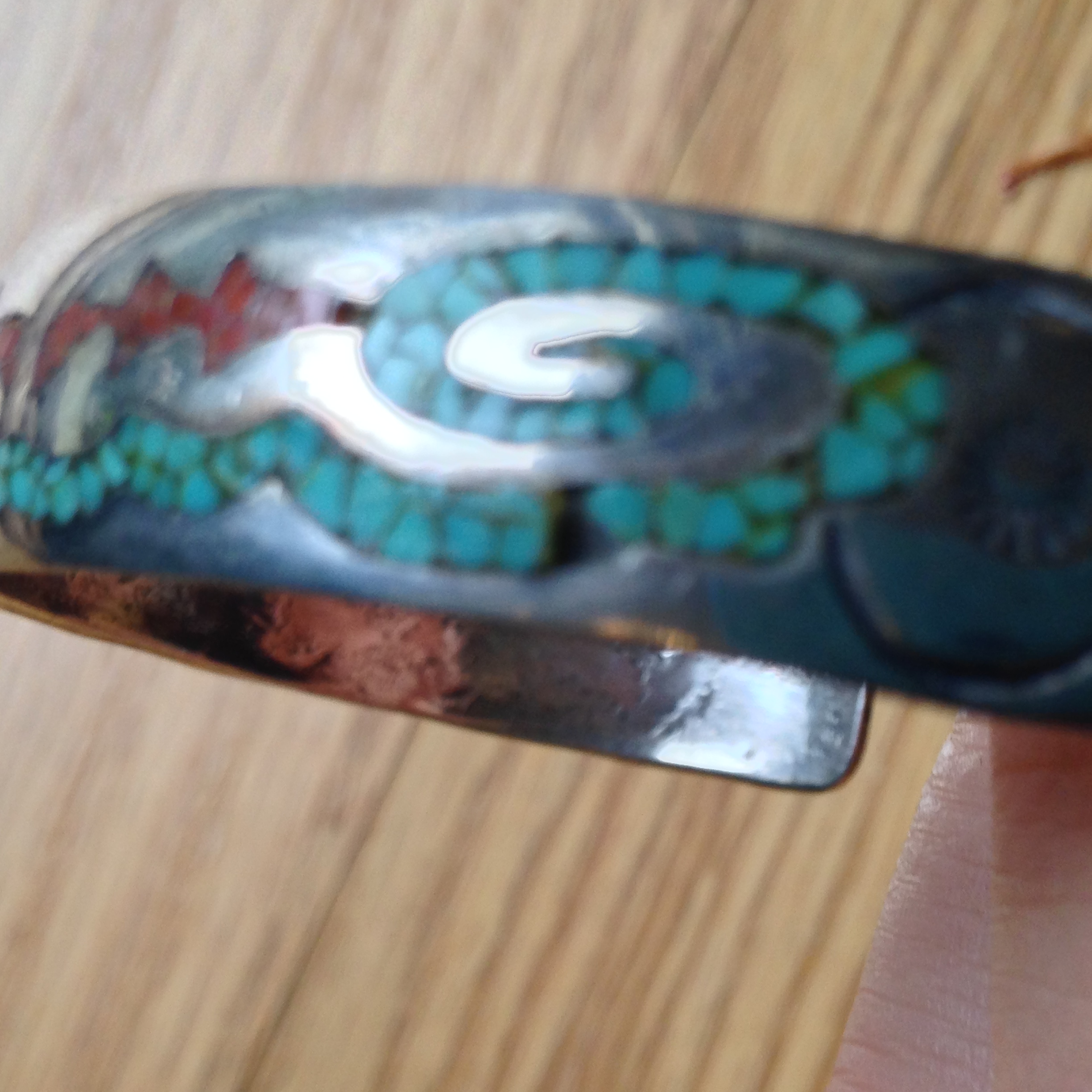 [/url]
[/url]
Popped-out inlay. This bracelet is quite thin.
[url=https://imgur.com/kpKTE6m]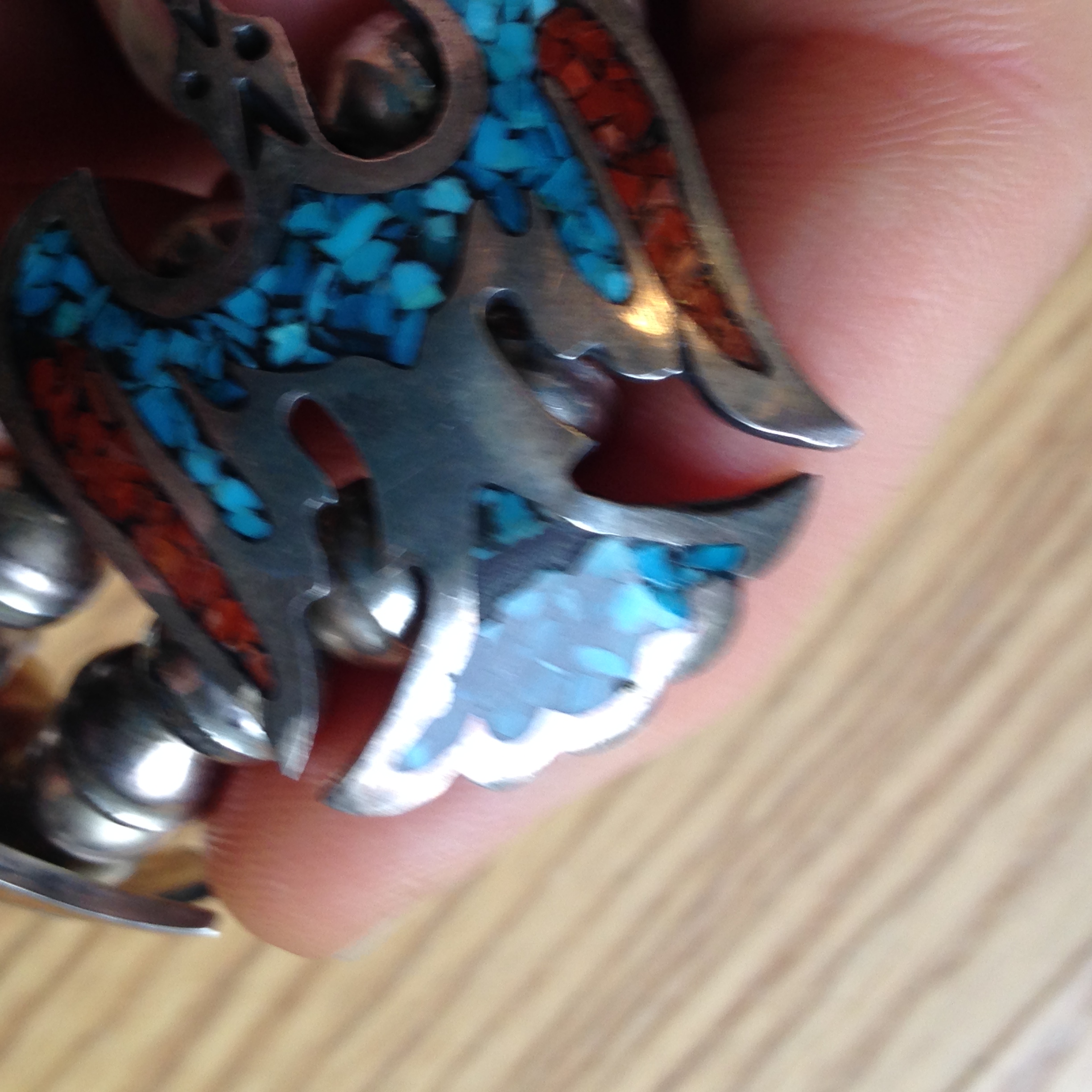 [/url]
[/url]
Popped out in the tail, probably from bending it
[url=https://imgur.com/5bUioYU]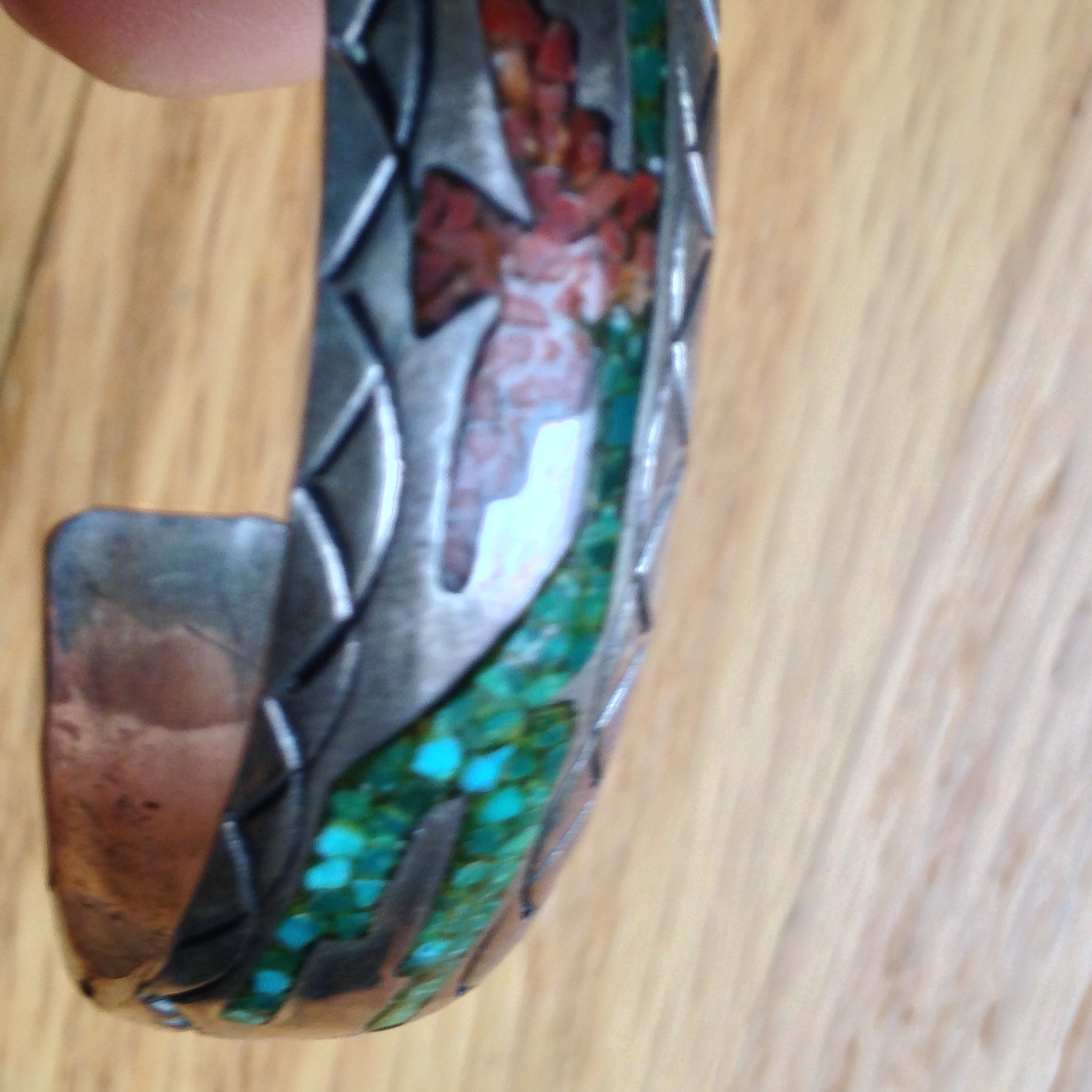 [/url]
[/url]
Inlay is raised. You can see the dark line where the turquoise is lifting upward from the silver. It should be completely flush and that line should not be visible.
-
Look out for missing sections of inlay. DJN never used overlay technique alongside the chip inlay, so there’s never any doubt in my mind when a recessed area hasn’t got inlay in it – I know it’s not “part of the design” as some sellers claim. I find this is also true of most other chip inlay artists.
-
Watch for abraded inlay or color loss in the inlay. This looks worse on coral than on turquoise. It will look like whitish patches on top of the inlay areas. Either someone rubbed it with something bad or exposed it to paste silver polish. You can’t fix this at home. I’m not even sure if a jewelry repair would handle it.
[url=https://imgur.com/TDIzxH4]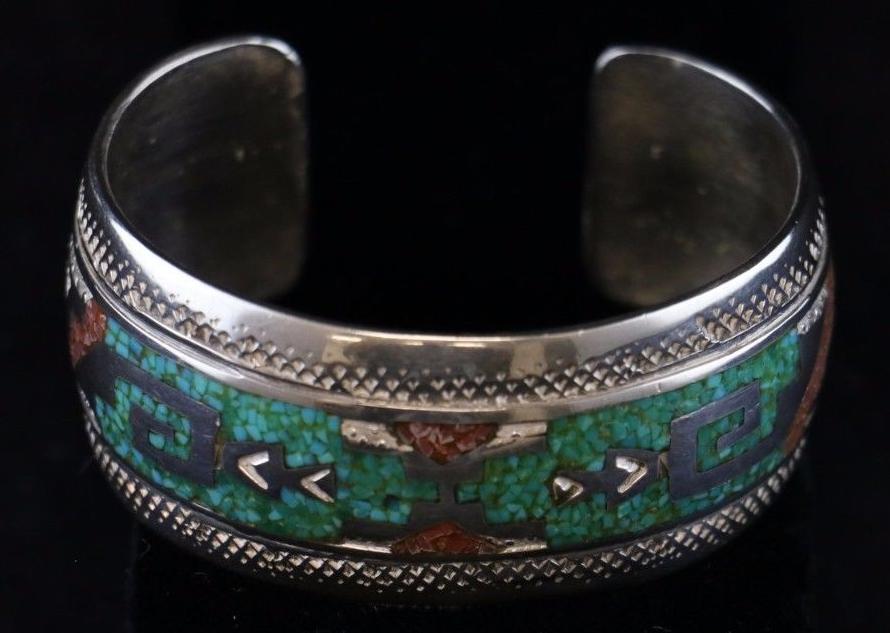 [/url]
[/url]
A beautiful Tommy Singer bracelet in which the coral has been abraded down to white.
- Look out for any pocks or pits in the inlay. The best inlay is smooth or just faintly grainy, not really bumpy. If a seller says that was an air bubble, they’re wrong. It’s possible for just one tiny piece of inlay to come out, and it will be visible and it will nag at you. The best inlay artists didn’t just dump the chips into place – it looks as if they tweezed and shifted it to arrange the tiny fragments into a mosaic.
[url=https://imgur.com/fIaA2wL]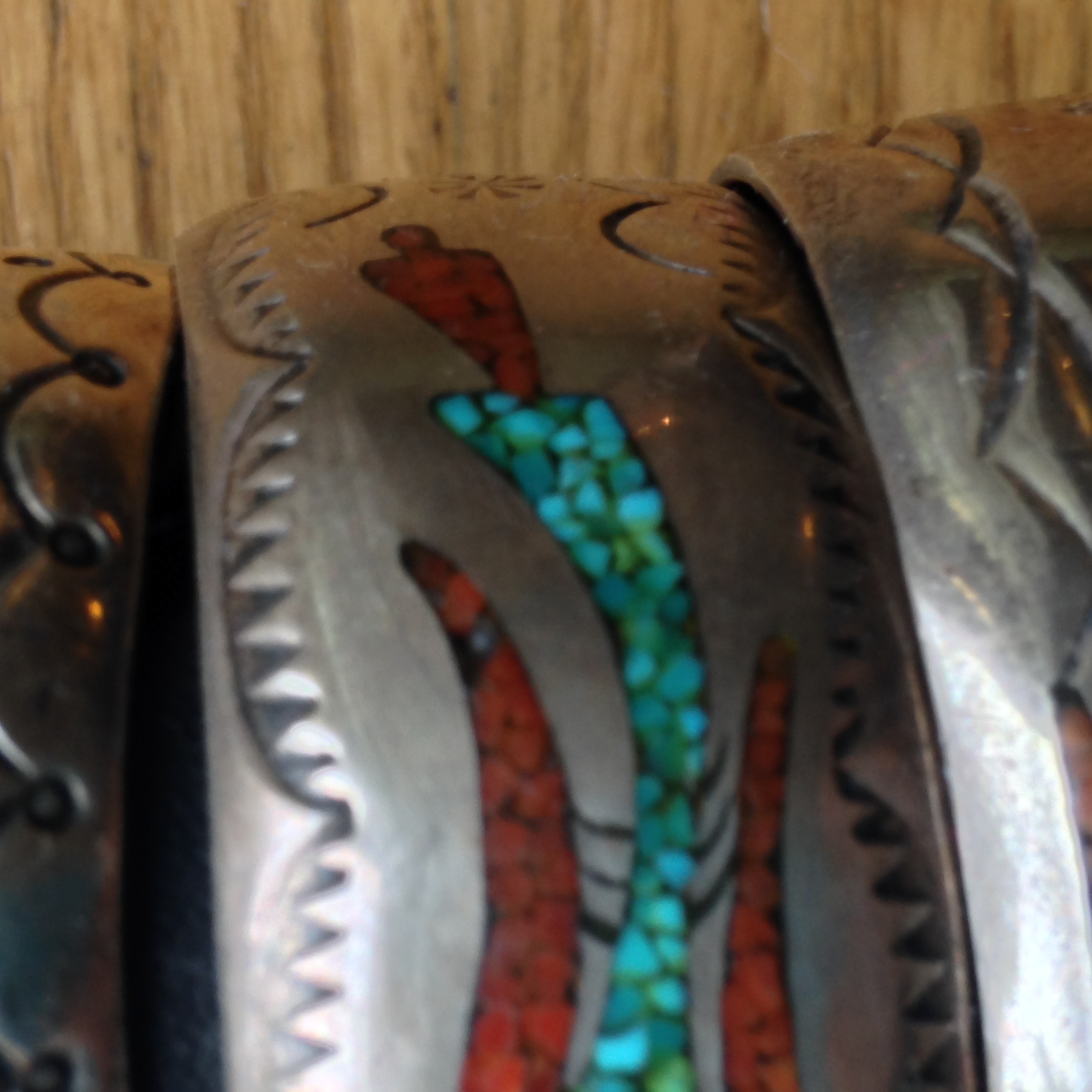 [/url]
[/url]
Dark pock on the peyote bird’s wing where a fragment of coral inlay is gone.
-
Avoid cheap chip inlay. There are pieces out there that look mass-produced. The turquoise in them, if that’s what it is, tends to look bluer, rather than greener. (This is also true of Mexican chip inlay, which can be well-done.) There is a lot of great chip inlay available and you don’t need to settle.
-
Be careful polishing it, if you like a shine. (See photo above with missing inlay.) It is okay to polish chip inlay if you have bought a piece in good condition – it’s the stressed pieces that need care. That’s why I advise you not to buy them. I own a few because I fell for the design. I polish only with a very soft cloth. This is up to individual taste. Personally, I like mine a little dark, but I own some pieces of chip inlay that look better with a dark patina and some that look better with a mirrorlike shine.
-
Hold out for a great design. A well-known name helps, but if you’re not collecting anyone specifically, keep looking until you find a piece you love. While Tommy Singer made beautiful chip inlay pieces, I have seen equally great pieces by other chip inlay artists. Tommy’s brothers William Singer and Charlie Singer also made great pieces. (Personally, my favorite, aside from Delvin Nelson, is Juan T. Singer. His work is big and bold and uses broader expanses of inlay than some of his contemporaries.)
An incomplete roster of chip inlay artists whose work I’ve viewed or handled.
Jimmie Nezzie, Charlie John, Herman Coan, Corbet Joe, Gibson Gene, Julius Ahasteen, Circle JW, the Ortega Shop, Fred Thompson, Jimmie Patterson, Les Baker, Stanley Bain, Dennison Tsosie, Nakai, Alfred Joe, Roy Vendever, Herman Benton, Wilson & Carolyn Begay, Cea Brown, Ida Begay, Sam Begay, Jerome Begay, D. Allison, John Nelson, Charlie Bowie, L. Claw, Benson Boyd, Kirby Nez,
And so many great unsigned pieces.
There is also an artist whose name I don’t know with a pictograph signature of four aligned geometric figures which fit together in an abstract figure. It is not the same as William Singer’s pictograph or Gibson Gene’s pictograph. That person’s work is beautiful. I hope to know their name one day.
[url=https://imgur.com/0eiSUAO]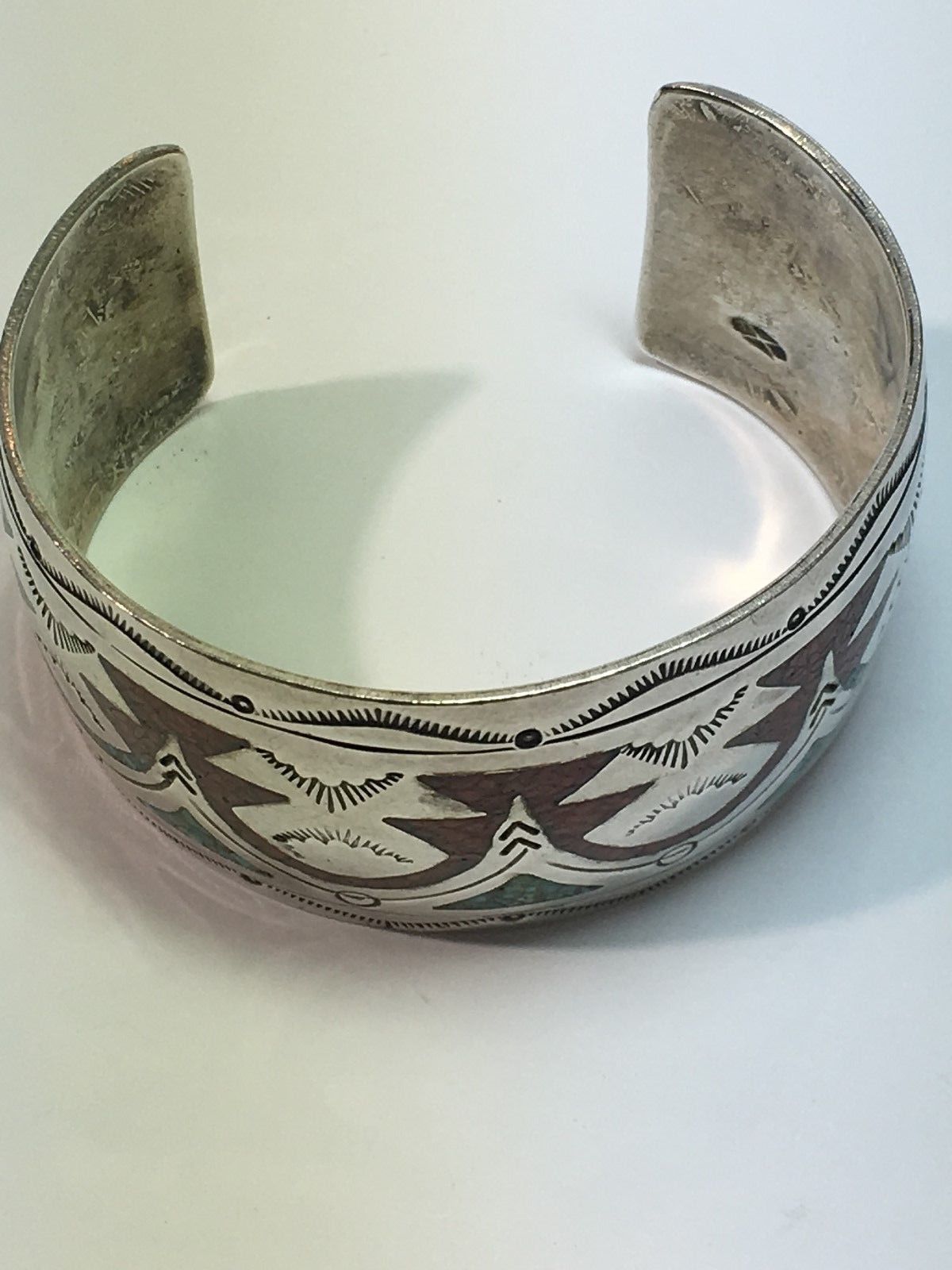 [/url]
[/url]
Happy hunting, and hope this was helpful to you in assessing future purchases.

